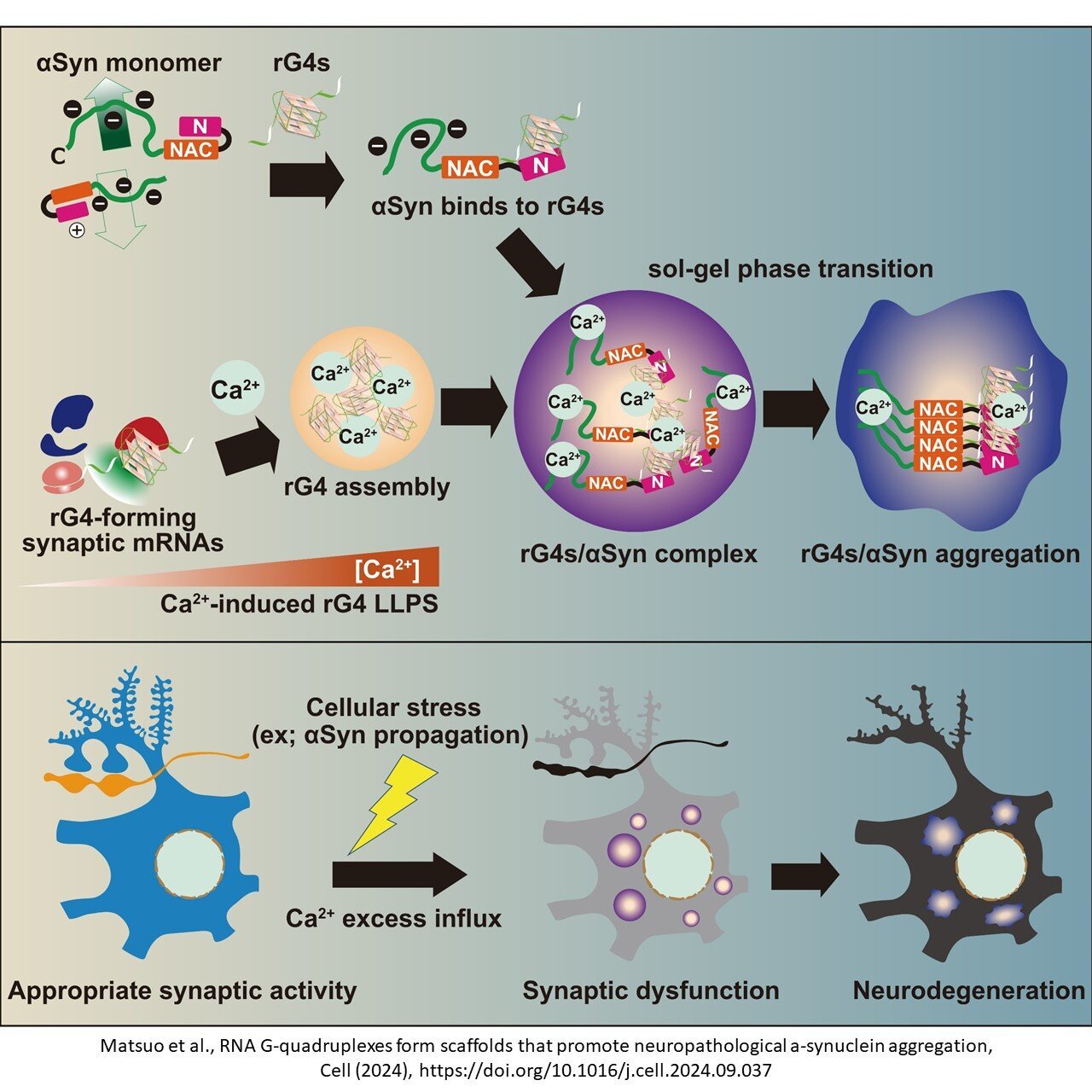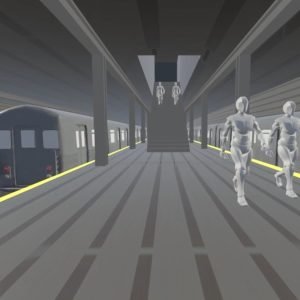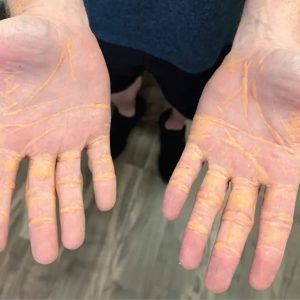
A team of researchers at Kumamoto University has uncovered a mechanism in the formation of harmful protein aggregates that lead to neurodegenerative diseases such as Parkinson’s disease.
The team, led by Professor Norifumi Shioda and Associate Professor Yasushi Yabuki, identified for the first time that unique RNA structures called G-quadruplexes (G4s) play a central role in promoting the aggregation of α-synuclein, a protein associated with neurodegeneration.
The study is published in the journal Cell.
By demonstrating that inhibiting G4 assembly could potentially prevent the onset of synucleinopathies, this discovery positions G4 as a promising target for early intervention in these diseases.
In a healthy state, α-synuclein typically regulates neuronal function. However, in neurodegenerative diseases, it aggregates together, leading to cell damage and motor symptoms. The researchers identified that G4s, four-stranded RNA structures that form in response to cellular stress, function as a “scaffold” that facilitates α-synuclein aggregation.
Elevated calcium levels, often seen under stress, trigger G4 assembly, which then attracts α-synuclein, converting it into a harmful, aggregate-prone state.
The team went a step further, demonstrating a new approach to prevent this process. They administered 5-aminolevulinic acid (5-ALA), a compound that blocks G4 formation, to model mice exhibiting Parkinson’s-like symptoms.
Impressively, 5-ALA treatment not only prevented α-synuclein aggregation but also halted the progression of motor symptoms, a promising sign for potential therapies targeting early-stage neurodegeneration.
This breakthrough could significantly advance treatments aimed at neurodegenerative diseases by focusing on G4 regulation. Since G4s are also implicated in other diseases such as Alzheimer’s disease, this discovery may broaden the impact of such treatments beyond Parkinson’s disease.
These findings shed new light on preemptive strategies to combat neurodegeneration and improve quality of life for aging populations.
More information:
Kazuya Matsuo et al, RNA G-quadruplexes form scaffolds that promote neuropathological α-synuclein aggregation, Cell (2024). DOI: 10.1016/j.cell.2024.09.037
Citation:
RNA structures present a promising target for early intervention in Parkinson’s disease (2024, November 1)
retrieved 1 November 2024
from https://medicalxpress.com/news/2024-11-rna-early-intervention-parkinson-disease.html
This document is subject to copyright. Apart from any fair dealing for the purpose of private study or research, no
part may be reproduced without the written permission. The content is provided for information purposes only.






